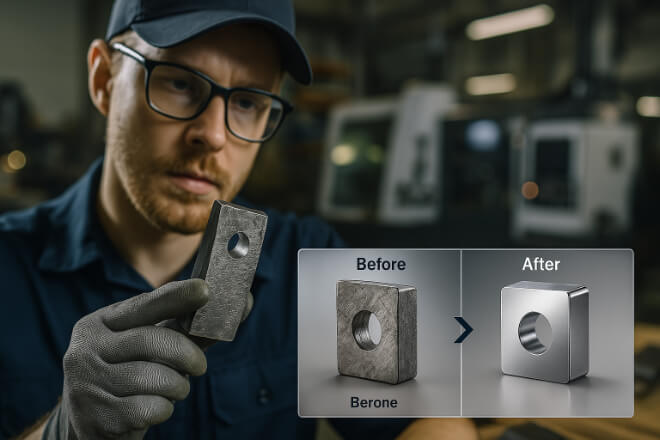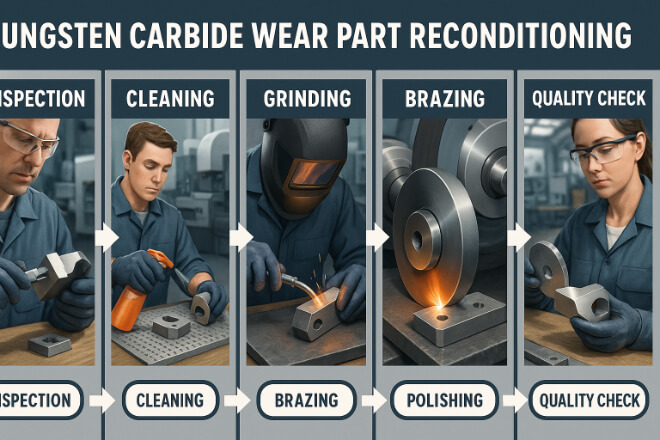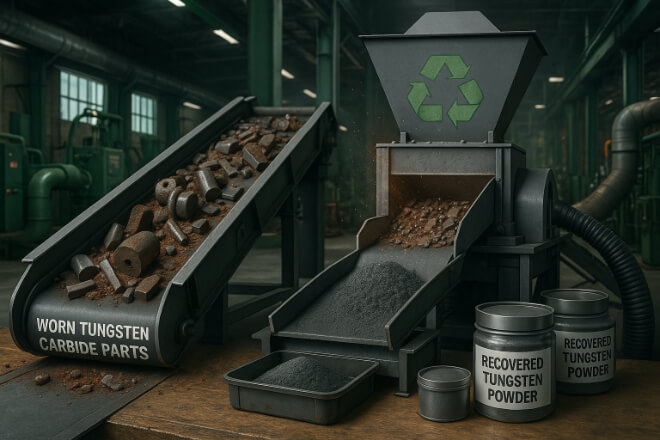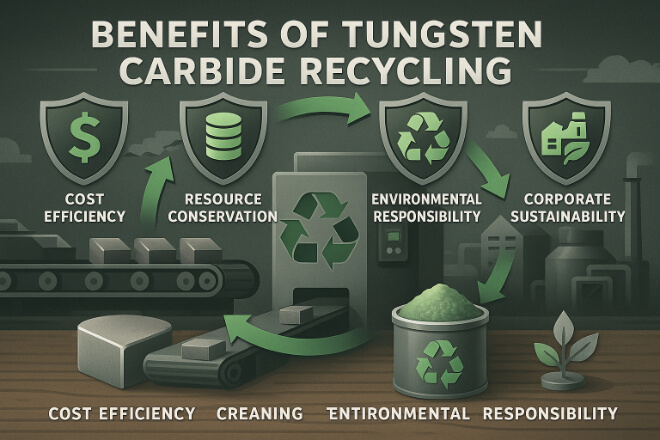为什么修复硬质合金磨损部件很重要

修复是指将使用过的磨损部件恢复到其原始形状、尺寸和性能。熟练的技术人员不会将磨损的部件报废,而是对其进行修复和表面翻新。
优点包括:
节省成本——修复比购买新零件便宜 30–70%。
延长使用寿命——经过适当修复的零件的使用寿命几乎与新零件一样长。
减少停机时间 – 与制造新零件相比,周转速度更快。
可持续性——减少材料浪费,降低环境影响。
修复过程

该过程根据硬质合金磨损部件的类型而有所不同,但通常包括:
检查和评估——检查零件是否有裂纹、碎片和结构损坏。
清洁——去除污垢、油污和碎屑。
研磨和重塑——专用机器恢复正确的几何形状和公差。
钎焊或焊接(如果需要)——用兼容的碳化物材料重建受损部分。
抛光和涂层——采用光滑的表面处理,并可添加保护涂层。
最终质量检查——在将零件送回服务之前,对尺寸和性能进行验证。
何时选择修复还是更换
| 零件状况 | 最佳选择 |
|---|---|
| 轻微磨损,无裂纹 | 修复 |
| 中度磨损,边缘有些崩裂 | 修复 |
| 严重磨损、深裂纹 | 代替 |
| 破损或缺失的部分 | 代替 |
回收碳化钨磨损件

回收不同于修复。它涉及将废旧硬质合金零件分解成可用于制造新产品的原材料。
回收步骤包括:
收集——从不同地点收集二手硬质合金零件。
分类——将碳化物与其他金属或材料分离。
加工——粉碎、铣削或化学处理零件以回收钨和钴。
净化——去除杂质以获得高纯度钨粉。
重整——回收的碳化钨用于生产新的磨损部件。
回收硬质合金零件的优势

成本效益——回收钨比开采新钨便宜。
资源保护——钨是一种有限的资源,回收利用可以减少新开采的需求。
环境责任——减少采矿意味着减少生态破坏。
企业可持续发展目标——帮助企业实现绿色制造目标。
受益最大的行业
| 行业 | 常见的硬质合金磨损件 | 修复潜力 |
|---|---|---|
| 矿业 | 钻头、破碎机刀头 | 高的 |
| 石油和天然气 | 阀座、流量控制工具 | 中等的 |
| 金工 | 切削刀片、模具 | 高的 |
| 木工 | 锯尖、刨刀片 | 高的 |
决策者如何实现价值最大化

对于行业领导者来说,决定是选择翻新还是回收,取决于零件状况、成本和运营需求。最佳实践方法包括:
制定检查计划以便尽早发现磨损。
与可靠的修复专家合作。
在公司内建立碳化物回收计划。
跟踪修复与更换所节省的成本。
结论
硬质合金磨损部件的修复和回收有助于公司节省资金、减少浪费并延长宝贵资源的使用寿命。
采用这些做法的决策者可以提高效率、支持可持续性并在苛刻的工业环境中保持高性能。
如果您想了解任何公司的更多详细信息,请随时 联系我们。
